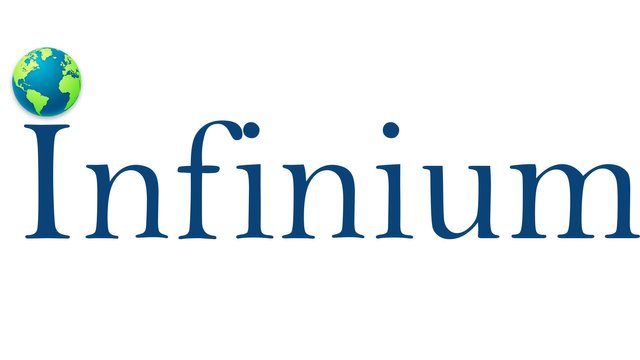
Introduction
The market for non-therapeutic antibiotics in food animals has garnered increasing attention due to its significant impact on animal health, agricultural practices, and food safety. Non-therapeutic antibiotics are used in animal feed to promote growth and improve feed efficiency, rather than to treat specific diseases. This practice has been widely adopted to enhance production efficiency and profitability in the livestock sector. However, growing concerns about antibiotic resistance and its implications for human health are prompting changes in regulations and consumer preferences. As the industry evolves, understanding market dynamics, regional trends, and competitive factors is crucial for stakeholders navigating this complex landscape.
Market Dynamics
Drivers:
Increased Demand for Animal Protein: The rising global demand for meat, dairy, and other animal products drives the use of non-therapeutic antibiotics to improve feed conversion rates and enhance livestock growth. This demand is particularly strong in developing regions with expanding middle-class populations.
Enhanced Feed Efficiency: Non-therapeutic antibiotics are used to improve feed efficiency, allowing for faster weight gain and better overall health of livestock. This leads to reduced production costs and increased profitability for farmers and producers.
Economic Benefits: The use of these antibiotics can lead to significant economic benefits by reducing feed costs and improving animal growth rates. This economic advantage drives widespread adoption in the agricultural sector.
Challenges:
Antibiotic Resistance: There is growing concern about the development of antibiotic-resistant bacteria due to the use of non-therapeutic antibiotics. This resistance poses risks to both animal and human health, leading to increased scrutiny and regulatory pressures.
Regulatory Restrictions: Many countries are implementing stricter regulations on the use of non-therapeutic antibiotics in food animals. These regulations aim to mitigate resistance issues but can impact market practices and product availability.
Consumer Awareness: Increasing consumer awareness about antibiotic use and its potential health impacts is leading to shifts in demand. Consumers are increasingly seeking products that are free from antibiotics, which influences market dynamics.
Opportunities:
Alternatives to Antibiotics: The development of alternatives to non-therapeutic antibiotics, such as probiotics, prebiotics, and phytogenics, offers opportunities for innovation and market growth. These alternatives can address health and growth needs without contributing to resistance.
Regulatory Compliance and Product Innovation: Companies that adapt to regulatory changes and invest in research and development to create compliant and effective products can gain a competitive advantage. Innovation in antibiotic-free production methods can open new market segments.
Sample Pages of Report: https://www.infiniumglobalresearch.com/reports/sample-request/1022
Regional Analysis
North America: The region, particularly the United States, has been a major market for non-therapeutic antibiotics due to the large scale of livestock production. However, increasing regulatory measures and consumer pressure are driving changes in antibiotic use practices.
Europe: Europe has stringent regulations concerning antibiotic use in food animals. The European Union has implemented policies to phase out non-therapeutic antibiotics, creating challenges and opportunities for market players to adapt to new standards.
Asia-Pacific: This region exhibits strong growth in the use of non-therapeutic antibiotics due to rising livestock production and increasing demand for animal protein. However, there is also growing awareness and regulatory action concerning antibiotic resistance.
Latin America & Middle East & Africa: These regions are experiencing gradual increases in antibiotic use due to expanding agricultural sectors. Regulatory frameworks are evolving, and there is a growing focus on sustainable and responsible antibiotic use.
Market Segmentation
By Type of Antibiotic: The market is segmented into categories such as tetracyclines, penicillins, macrolides, and others. Each category has specific applications and regulatory considerations.
By Animal Type: Segmentation includes cattle, poultry, swine, and aquaculture. The use of non-therapeutic antibiotics varies by animal type, with different practices and regulations applying to each.
By Application: Applications include growth promotion, feed efficiency, and disease prevention. Growth promotion remains a significant driver, although disease prevention is gaining attention.
By Distribution Channel: Distribution channels include direct sales to farms, online platforms, and veterinary clinics. The growing digitalization of the agricultural sector is increasing the role of online distribution.
Competitive Landscape
Market Share of Large Players: Major players in the non-therapeutic antibiotics market, such as Zoetis, Elanco, and Merck, hold significant market share due to their extensive product portfolios, established market presence, and global distribution networks.
Price Control by Big Players: Large companies often influence pricing trends through economies of scale, extensive R&D investments, and strategic partnerships. They can set market standards and pricing structures for non-therapeutic antibiotics.
Challenges from Smaller Companies: Small and mid-sized companies are increasingly challenging larger players by offering specialized or alternative products. These companies often target niche markets or focus on innovative solutions that align with evolving regulatory requirements.
Key Players:
Zoetis Inc.
Elanco Animal Health Incorporated
Merck & Co., Inc.
Boehringer Ingelheim
BASF SE
Cargill, Incorporated
Heska Corporation
Report Overview: https://www.infiniumglobalresearch.com/reports/global-non-therapeutic-antibiotics-for-food-animals-market
Future Outlook
New Product Development: Innovation in non-therapeutic antibiotics and their alternatives is crucial for market growth. Companies investing in R&D to develop effective, safe, and regulatory-compliant products are likely to gain a competitive edge. New product development helps companies stay relevant and meet changing market demands.
Sustainable Practices: There is a growing emphasis on sustainability in agricultural practices. Products that align with environmental and health sustainability, such as those minimizing antibiotic resistance, are gaining favor among consumers and regulatory bodies. Sustainable practices can enhance brand reputation and appeal to health-conscious consumers.
Conclusion
The non-therapeutic antibiotics market for food animals is evolving due to increasing regulatory pressures, consumer awareness, and the need for sustainable practices. While challenges such as antibiotic resistance and regulatory changes present hurdles, opportunities exist in developing alternatives and innovative solutions. Companies that adapt to these changes and invest in new product development and sustainable practices will be well-positioned for future success in this dynamic market.